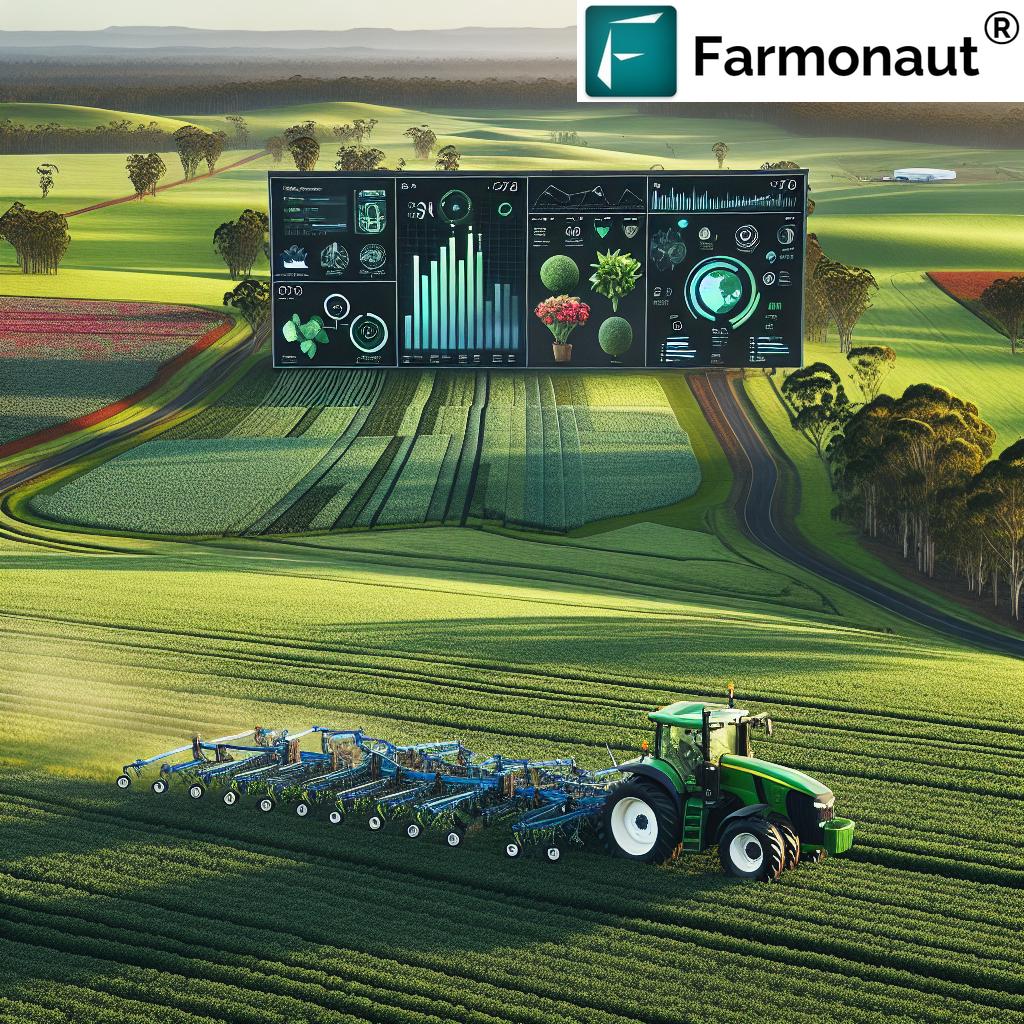Sustainable Viticulture: How Australian Wineries Combat Climate Change with Innovative Management Techniques
“Australian wineries have reduced water usage by up to 30% through precision viticulture techniques in response to climate change.”
In the face of evolving climate conditions, the Australian wine industry stands as a testament to resilience and innovation. As stewards of the land, we recognize the urgent need to adapt our viticulture practices to ensure the longevity and quality of our nation’s beloved wines. From the sun-drenched vineyards of South Australia to the cool-climate regions of Tasmania, Australian winemakers are implementing cutting-edge sustainable winemaking practices and innovative vineyard management techniques to combat the challenges posed by climate change.

In this comprehensive exploration of sustainable viticulture in Australia, we’ll delve into the innovative strategies employed by our wineries to maintain the exceptional quality and character of Australian wines while prioritizing environmental stewardship. From precision viticulture technology to advanced wine grape disease prevention methods, we’ll uncover how the sector is adapting to changing weather patterns and safeguarding the future of our vineyards.
The Australian Wine Industry: A Snapshot of Resilience
The Australian wine industry has long been recognized for its diverse range of high-quality wines, from the crisp Chardonnays of the Adelaide Hills to the bold Shirazes of the Barossa Valley. However, the sector now faces unprecedented challenges due to climate change, necessitating a proactive approach to vineyard management and winemaking practices.
- Australia boasts over 65 wine regions, each with unique terroir and climatic conditions
- The industry contributes significantly to the national economy, with exports valued at over $2 billion annually
- Climate change impacts, including rising temperatures and altered rainfall patterns, pose significant threats to wine production
As we navigate these challenges, the Australian wine industry is embracing a range of innovative vineyard management solutions and sustainable practices to ensure the continued production of world-class wines.
Climate Change and Viticulture: Understanding the Impacts
The relationship between climate and wine production is intricate and delicate. As climate change alters traditional weather patterns, Australian viticulturists are observing significant impacts on their vineyards:
- Earlier budburst and harvest dates due to warmer temperatures
- Changes in grape composition, affecting sugar levels and acidity
- Increased frequency of extreme weather events, such as heatwaves and droughts
- Shifts in pest and disease pressures
These changes necessitate adaptive strategies to maintain wine quality and preserve the unique characteristics of Australian terroir. Let’s explore some of the innovative techniques being employed across the nation’s vineyards.
Precision Viticulture Technology: A Game-Changer for Australian Wineries
Precision viticulture technology is revolutionizing the way Australian wineries manage their vineyards. By leveraging data-driven insights, growers can optimize resource use and improve grape quality. Here’s how this technology is making a difference:
- Satellite imaging and drone technology for accurate vineyard mapping
- Soil moisture sensors for precise irrigation management
- Weather stations providing real-time microclimatic data
- GPS-guided machinery for targeted application of inputs
One company at the forefront of this technological revolution is Farmonaut, offering advanced satellite-based farm management solutions. Their platform provides valuable services such as real-time crop health monitoring and AI-based advisory systems, empowering Australian viticulturists to make data-driven decisions.
Explore Farmonaut’s innovative solutions:
Sustainable Winemaking Practices: From Vine to Bottle
Australian wineries are increasingly adopting sustainable winemaking practices to reduce their environmental impact and adapt to changing climate conditions. These practices span the entire winemaking process:
- Water conservation through efficient irrigation systems and water recycling
- Renewable energy adoption, including solar panels and wind turbines
- Organic and biodynamic farming methods to promote soil health
- Carbon sequestration through cover cropping and minimal tillage
- Biodiversity enhancement by planting native vegetation corridors
These sustainable practices not only help combat climate change but also contribute to the production of high-quality, environmentally conscious wines that resonate with eco-aware consumers.
Wine Grape Disease Prevention: Staying Ahead of Climate-Induced Threats
As climate change alters disease pressures in vineyards, wine grape disease prevention has become a critical focus for Australian viticulturists. Innovative approaches include:
- Early detection systems using AI and image recognition technology
- Climate-resistant grape varieties and rootstocks
- Integrated pest management strategies
- Canopy management techniques to improve air circulation
By implementing these advanced disease prevention methods, Australian wineries are better equipped to protect their crops and maintain the health of their vineyards in the face of changing climatic conditions.
Chardonnay Cultivation Techniques: Adapting a Classic Variety
Chardonnay, a cornerstone of the Australian wine industry, is particularly sensitive to climate change. Winemakers are employing innovative Chardonnay cultivation techniques to preserve the variety’s delicate flavors and balance:
- Night harvesting to maintain acidity levels
- Increased use of cooler sites and higher elevations
- Canopy management for optimal sun exposure
- Precision irrigation to manage water stress
These techniques allow Australian winemakers to continue producing world-class Chardonnays, adapting to warmer temperatures while maintaining the variety’s distinctive character.
“The National Wine Show features over 2,500 wines from more than 30 distinct Australian wine regions, showcasing the industry’s diversity.”
Wine Region Adaptation Strategies: A National Effort
Across Australia, wine regions are implementing tailored adaptation strategies to address their specific climate challenges:
- Yarra Valley: Exploring cooler-climate varieties and higher-elevation plantings
- McLaren Vale: Adopting drought-resistant varieties and water-efficient irrigation
- Margaret River: Implementing precision viticulture for optimal resource management
- Tasmania: Capitalizing on warming trends to expand suitable growing areas
These region-specific approaches demonstrate the Australian wine industry’s commitment to innovation and adaptability in the face of climate change.

Australian Wine Export Trends: Navigating Global Markets
As the Australian wine industry adapts to climate change, it’s also responding to shifting export trends:
- Diversification of export markets to reduce dependency on single markets
- Promotion of sustainable and climate-adaptive winemaking practices
- Focus on premium and ultra-premium wines to showcase quality over quantity
- Exploration of new packaging solutions to reduce carbon footprint in transportation
These strategies help maintain Australia’s position as a leading wine exporter while addressing the environmental concerns of global consumers.
The Role of Technology in Sustainable Viticulture
Technology plays a crucial role in enabling sustainable viticulture practices. Advanced tools and platforms, such as those offered by Farmonaut, provide invaluable support to Australian winemakers:
- Satellite-based crop health monitoring for early detection of stress or disease
- AI-powered advisory systems for optimized decision-making
- Blockchain-based traceability for enhanced transparency in the supply chain
- Resource management tools for efficient use of water and other inputs
By leveraging these technological advancements, Australian wineries can make data-driven decisions that support both sustainability and quality.
Explore Farmonaut’s API for advanced agricultural insights:
Farmonaut API
API Developer Docs
The Future of Australian Viticulture: Embracing Change and Innovation
As we look to the future, the Australian wine industry remains committed to innovation and sustainability. Key areas of focus include:
- Ongoing research into climate-resistant grape varieties
- Development of advanced AI and machine learning tools for viticulture
- Collaboration between wineries, research institutions, and technology providers
- Investment in renewable energy and carbon-neutral winemaking practices
By embracing these innovations and maintaining our commitment to sustainability, we ensure that Australian wines will continue to be celebrated on the world stage for generations to come.
Australian Wine Regions: Climate Change Impacts and Adaptation Strategies
| Wine Region | Signature Grape Varieties | Primary Climate Change Impacts | Innovative Management Techniques | Sustainable Practices Implemented | Estimated Reduction in Environmental Impact (%) |
|---|---|---|---|---|---|
| Barossa Valley | Shiraz, Grenache | Increased heatwaves, water scarcity | Night harvesting, precision irrigation | Drought-resistant rootstocks, solar power adoption | 25% |
| Margaret River | Cabernet Sauvignon, Chardonnay | Rising temperatures, shifting rainfall patterns | Canopy management, variety diversification | Water recycling, biodiversity corridors | 30% |
| Yarra Valley | Pinot Noir, Chardonnay | Earlier ripening, increased bushfire risk | Cool climate variety trials, smoke taint mitigation | Organic farming, carbon sequestration | 20% |
| Hunter Valley | Semillon, Shiraz | Increased humidity, extreme weather events | Disease-resistant clones, improved drainage systems | Integrated pest management, renewable energy use | 22% |
| Tasmania | Pinot Noir, Chardonnay, Riesling | Warming trends, changing frost patterns | New vineyard site selection, frost protection technology | Minimal intervention winemaking, native vegetation preservation | 18% |
Conclusion: A Sustainable Future for Australian Wine
The Australian wine industry’s response to climate change showcases our resilience, innovation, and commitment to sustainability. By embracing precision viticulture technology, implementing sustainable winemaking practices, and adopting innovative vineyard management techniques, we are ensuring the continued production of world-class wines while safeguarding our environment.
As we move forward, the collaboration between wineries, technology providers like Farmonaut, and research institutions will be crucial in developing new solutions to combat climate change. Through these efforts, we are not only preserving the quality and character of Australian wines but also setting a global standard for sustainable viticulture.
The journey towards sustainable viticulture is ongoing, and with each vintage, we learn and adapt. By staying at the forefront of innovation and maintaining our commitment to environmental stewardship, the Australian wine industry is well-positioned to thrive in the face of climate change, continuing to produce the exceptional wines that have made our nation a leader in the global wine market.
FAQs
Q: How is climate change affecting Australian wine production?
A: Climate change is impacting Australian wine production through rising temperatures, altered rainfall patterns, and increased frequency of extreme weather events. These changes affect grape ripening, harvest timing, and overall wine quality.
Q: What are some sustainable practices being adopted by Australian wineries?
A: Australian wineries are implementing water conservation measures, adopting renewable energy sources, practicing organic and biodynamic farming, and enhancing biodiversity in their vineyards.
Q: How is technology helping Australian viticulturists adapt to climate change?
A: Technology such as precision viticulture tools, satellite imaging, and AI-powered advisory systems are helping viticulturists make data-driven decisions to optimize resource use and improve grape quality.
Q: Are Australian wineries exploring new grape varieties due to climate change?
A: Yes, many Australian wineries are experimenting with climate-resistant grape varieties and exploring cooler climate regions to adapt to changing conditions.
Q: How is the Australian wine industry addressing export challenges in light of climate change?
A: The industry is diversifying export markets, focusing on premium wines, and promoting sustainable practices to maintain its competitive edge in the global market.




















